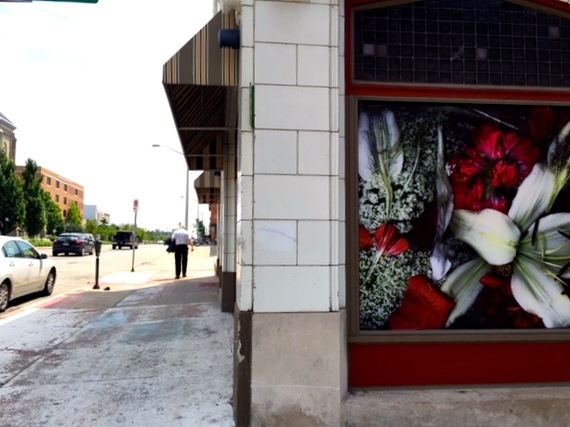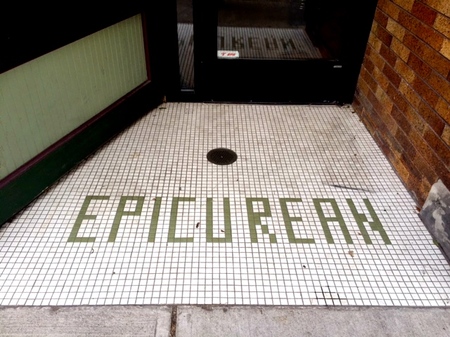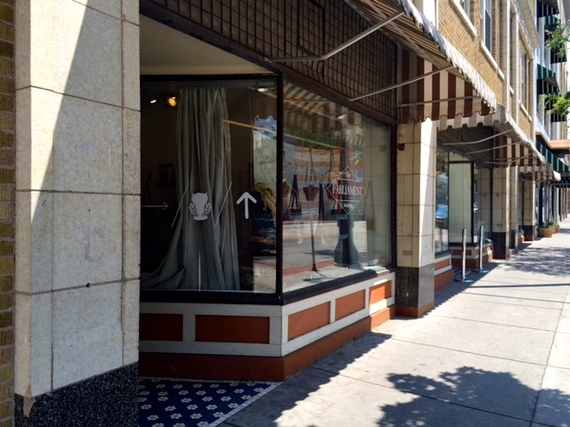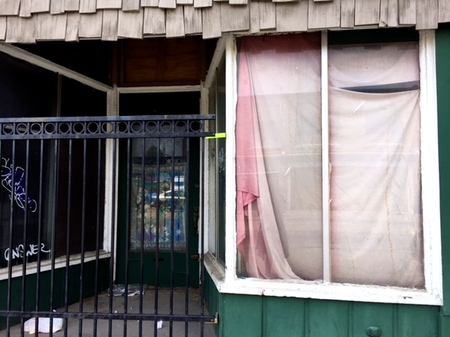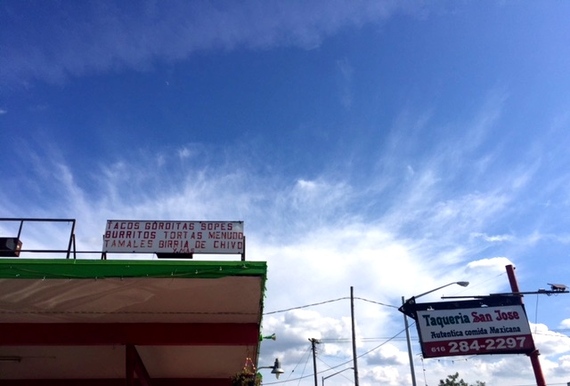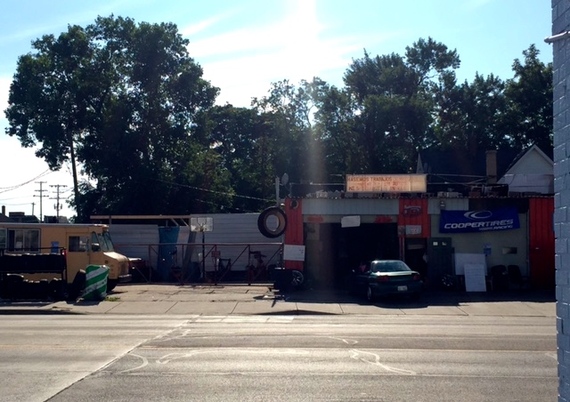Time travel exists. Just travel down Division Street in Grand Rapids, Michigan. From Medical Mile to 28th Street, the city shifts from the recently new to the established old. New businesses such as Propaganda Donuts and Have Company are all clustered near central points of downtown. As you venture down the six long blocks leading you away from the new, you encounter old restaurants, grocery stores, tire and auto shops. The new is situated in an ever increasing White young neighborhood while the old is in the heart of the black and Latino community. The line between the old and the new is constantly shifting. It has been pushed out from the center and into the communities of color. The divide is a sharp one and one that invites many questions. Instead of speculating if a division is truly present on Division Street, I went to see for myself.
I first walked just as far as my leash of comfort allowed. I walked not too far from my favorite coffee shop in town and not too far from my safely parked car. Within my reach were the hip new businesses -- places where I was sure to be greeted by a person that resembled me. My first interview was with co-owner of Epicurean.
Dried pasta made by hand hung all along the right wall. Baskets of pasta sauce and olive oil overflowed each corner. Hidden behind delicious pasta and its flavorful companions was a chic yet cozy cafe. I asked to speak with the owner and was met by a smiling man. His initial hesitation tethered to the air between us, but as the minutes rolled by, a film of ease blanketed our conversation. Ryan Raredon spoke about his motivation for moving his store to Division Street and the positive impact it has created upon the community.
"We like more historic buildings. We decided [this particular building] would be ideal because we would have more space [...] We like to participate in rejuvenation of areas that have been considered blighted areas in the past. We make all of our pasta by hand. And that's a very rare thing. There aren't many companies making handmade pasta anymore."
Ryan also shared his positive perspective on the changes happening to the downtown area. "I think [the change] is great! I think it is indicative of what's happening in many cities in the States."
Next, I visited The Parliament Boutique, a small store filled with unique leather and knit work.
A young man peered from behind a door and greeted me in a soft voice. We sat separated by a work desk and an element of nervousness. Jacob Vroon spoke of the origins of his store and his new life on Division. The local artist stated, "It's an excellent opportunity to be down here. Where else could we have an apartment and a store front all in one? We would otherwise have to choose. It's a great place for where we are in our careers." He too held a similar view as Ryan on the changes occurring in downtown. "There is definitely an upswing happening in this part of town. Things have been vacant for so long [...] This space is finally getting some positive views and it's a great startup culture."
I reached the end of my questions and said my goodbyes.
Then I walked further. Away from my rings of comfort and into spaces that challenged me. I parked my car in between rust covered vehicles and walked onto Division Street where I became a stranger. My blonde curls and fair skin were in stark contrast with my new background.
I first spoke with Mayra Barajas, a young girl who works at an authentic Mexican taqueria.
She extended me an inviting smile despite the busyness surrounding her. Our conversation was brief and lodged in the middle of her shift, but she let me know that the changes in downtown are positive. "Why would making our city better affect us? We are glad Grand Rapids is growing and becoming a better city." Similarly to Ryan and Jacob, she too believes that her business is providing a unique product to her community. "We believe that Taqueria San Jose contributes to the community by bringing real authentic food."
Across the street, a cashier from St. Vincent thrift store told me that "the changes in downtown are great. Really makes the place look better and brings in new customers." She interjected her concern about not having enough low-income housing between remarks of positivity. Our short conversation ended in polite thank you's and goodbyes.
At a tire store nearby, I met Juan, a black Latino man who has owned his store for 28 years.
I introduced myself in the same way I had done previously, but instantly I knew this conversation would not flow as it had with previous business owners. Standing in his shop filled with black tires and black customers, my whiteness stood out like an encroaching disease. I resembled the White people buying buildings on the block, the White people moving to the "cool" parts of the city, the White people that denied him a business loan, the White people that took too often. His anger was painted as heavily as the tire grease on his hands. The initial words that parted his lips were: "the change downtown? It's good. It's nice." But his words stumbled and his voice grew stronger. Then, he was stating that the change did not affect him. "Why do I care? It is down there not here." But his thoughts poured more.
"Do you see that building? And that one across the street? All White people. All bought by White people. I ask for a loan to expand my business. But they see a black man come in and shake their head. I can't fix my store. I can't make more money. I can't buy a house, because I am black. But these White people can."
Juan exhaled his honesty and pain to me and I listened. At the end, he simply shook his head and smiled as if to say "what can you do - that's the way it is." I couldn't muster the right response - I wasn't even sure what "right" looks like. Instead, I thanked him for his honesty and his time and walked back towards my car. Halfway, I turned around and saw him moving through the same rhythm he has been following in the same shop for nearly three decades.
I learned many things during my afternoon on Division Street. The changes in downtown are definitely there and they definitely are visible. The few businesses I spoke to from both ends of the street all see the changes as positive. They bring flowers and trees to the neighborhood. They bring new and improved bus stops. They bring diverse products and customers. But there is a glaringly lack of improvement for some of the old business owners. Low-income housing and accessible business loans are not part of the changes occurring in downtown. Beneath the surface level of improved beauty, Division Street is still true to its name - a place divided between the old and the new. But, I believe that the street holds the potential to build bridges over its divisions.
